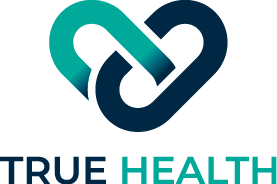Massage for Arthritis Relief: What the Research Says
Arthritis is one of the most common chronic conditions in Australia, affecting millions of people and causing joint pain, stiffness, and inflammation. While medications and physiotherapy are often used to manage symptoms, massage therapy has been proven to provide significant relief by reducing inflammation, improving circulation, and easing pain.
How Does Massage Help with Arthritis?
- Reduces Joint Inflammation – Massage helps improve lymphatic drainage, reducing swelling around arthritic joints.
- Eases Muscle Tension – Many people with arthritis experience muscle tightness due to altered movement patterns. Massage helps relax surrounding muscles, preventing further strain on affected joints.
- Increases Circulation – Improved blood flow delivers oxygen and nutrients to joints, promoting healing and reducing stiffness.
- Enhances Range of Motion – Arthritis can limit flexibility. Massage techniques help loosen stiff joints, making movement easier.
- Provides Natural Pain Relief – Massage triggers the release of endorphins and serotonin, reducing pain perception.
Scientific Evidence Supporting Massage for Arthritis
Research has consistently shown the positive effects of massage therapy on arthritis symptoms:
- A study published in the Journal of Alternative and Complementary Medicine found that individuals with osteoarthritis who received regular massage therapy reported reduced pain and improved joint function.
- Another study in the Archives of Physical Medicine and Rehabilitation found that massage therapy reduced stiffness and improved grip strength in people with rheumatoid arthritis.
Best Massage Techniques for Arthritis
Different massage techniques can be tailored to the needs of arthritis sufferers:
- Swedish Massage – Uses gentle, flowing strokes to improve circulation and relax muscles without causing joint discomfort.
- Myofascial Release – Works on the connective tissue around joints, helping to reduce tightness and increase mobility.
- Reflexology – Focuses on pressure points in the feet and hands, relieving pain without direct pressure on affected joints.
- Trigger Point Therapy – Targets specific areas of muscle tightness to relieve pain in surrounding joints.
Massage Therapy for Different Types of Arthritis
- Osteoarthritis (OA) – The most common form of arthritis, OA affects the cartilage in joints, leading to pain and stiffness. Massage therapy can help maintain mobility and reduce discomfort.
- Rheumatoid Arthritis (RA) – An autoimmune condition that causes joint inflammation, RA sufferers benefit from gentle massage techniques to reduce swelling and pain.
- Gout – A type of arthritis caused by uric acid buildup, gout can lead to intense joint pain. Massage can stimulate circulation and help flush out toxins.
Safety Considerations for Massage and Arthritis
While massage therapy is highly beneficial, individuals with arthritis should:
- Communicate any pain levels to their therapist to ensure appropriate pressure is applied.
- Avoid deep tissue massage on inflamed joints to prevent further irritation
- Schedule regular sessions to maintain joint mobility and long-term relief.
A Complementary Approach to Arthritis Management
While massage cannot cure arthritis, it can play a key role in pain management and quality of life. By reducing inflammation, improving flexibility, and easing muscle tension, massage therapy offers a natural and effective way to support individuals with arthritis.
If you suffer from arthritis, consider integrating regular massage sessions into your self-care routine. It’s a gentle, non-invasive, and proven way to manage pain and maintain mobility, helping you stay active and independent.


